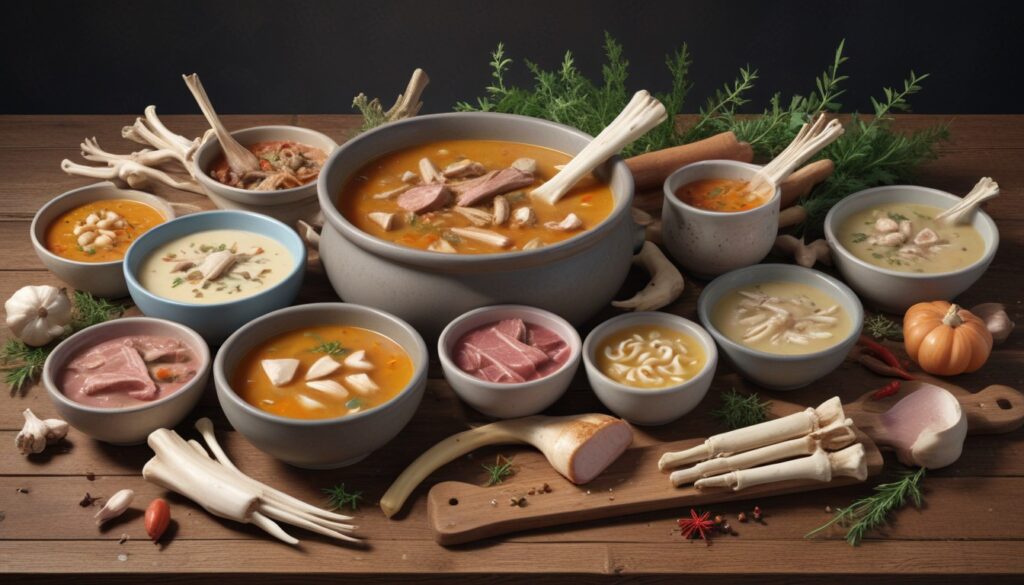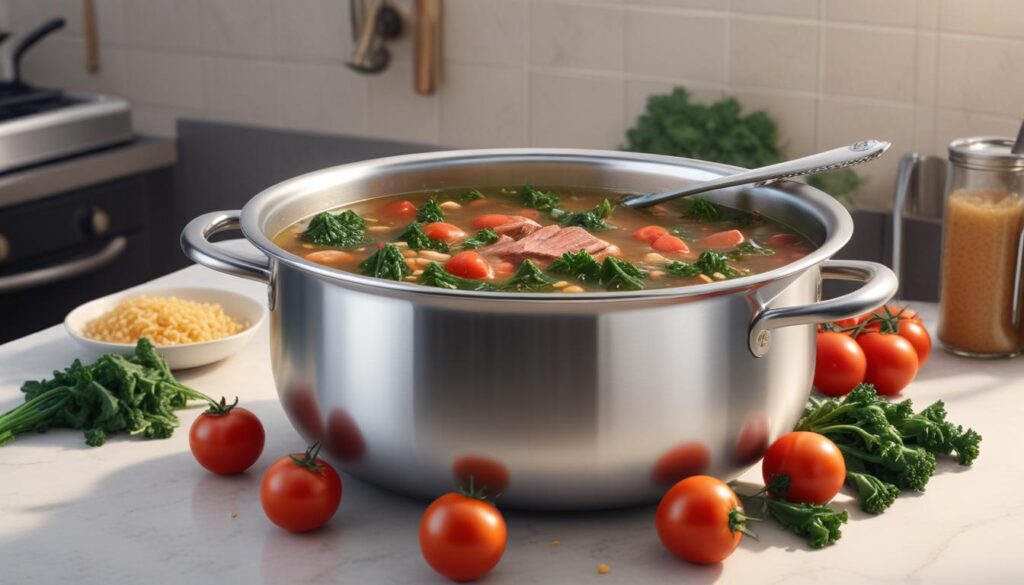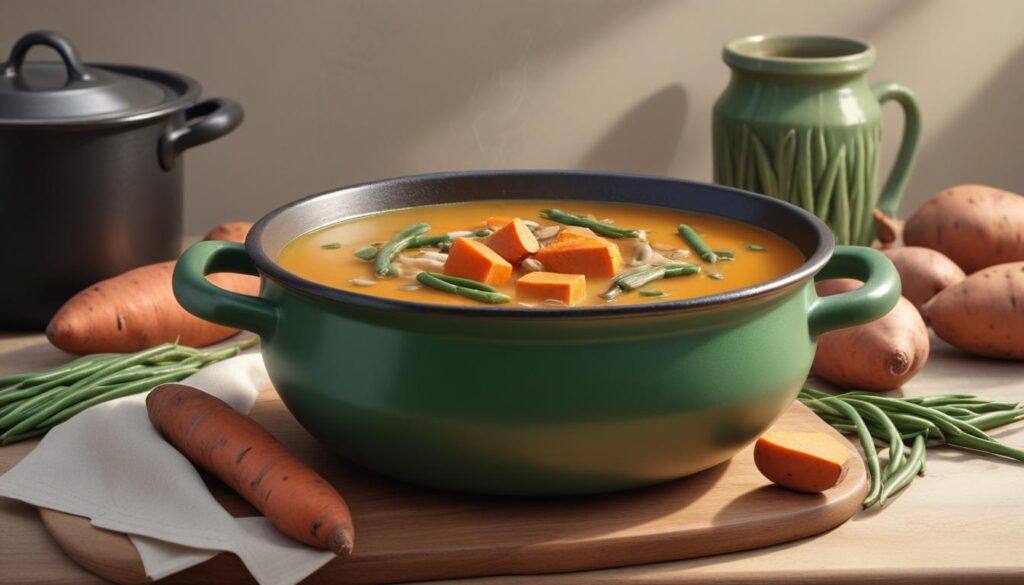Introduction
Soup bones might not be the star of the culinary show, but they’re the unsung heroes that bring depth and richness to your favorite broths and stews. So, what exactly are soup bones? These are bones from various animals like cows, chickens or fish that are used to make soup stock or broth. They’re packed with nutrients and flavor, making them an essential ingredient in many kitchens around the world.

Types of Soup Bones
Beef Bones
Beef bones are perhaps the most popular choice for making broth. They include marrow bones, knuckle bones, and oxtails. Each type brings its unique flavor and richness to the broth.

Chicken Bones
Chicken bones are another common option. They’re often used in making chicken stock or broth, which serves as a base for many soups and sauces.
Fish Bones
Fish bones are used to make fish stock, which is a base for many seafood soups and stews. They impart a delicate, oceanic flavor to the broth.
Nutritional Benefits of Soup Bones
Rich in Collagen
Collagen is a protein found in connective tissues of animals. When you simmer bones for hours, the collagen breaks down into gelatin, which is great for your joints, skin, and gut health.
Source of Minerals
Soup bones are rich in essential minerals like calcium, magnesium, potassium, and phosphorus. These minerals leach into the broth during cooking, making it a nutritious drink.
Protein Content
Bone broth is also a good source of protein, which is essential for muscle repair and growth.
Choosing the Right Soup Bones
Factors to Consider
When selecting soup bones, consider the type of dish you’re preparing. Different bones provide different flavors and textures. Also, look for bones that are from grass-fed or organically raised animals for the best quality and health benefits.
Where to Buy
You can find soup bones at your local butcher, farmer’s market, or even in some grocery stores. Online retailers also offer a variety of high-quality soup bones.
Preparing Soup Bones
Cleaning and Cutting
Before using soup bones, it’s important to clean them thoroughly to remove any residual blood or impurities. Some recipes may require you to cut the bones into smaller pieces to fit in your pot.
Roasting vs. Raw Bones
Roasting bones before simmering them can enhance the flavor of your broth. This step caramelizes the bones and adds a deeper, richer taste. However, some recipes call for using raw bones, which gives a lighter flavor.
Making Bone Broth
Basic Bone Broth Recipe
Making bone broth is simple but requires patience. Here’s a basic recipe:
- Place your soup bones in a large pot.
- Add enough water to cover the bones.
- Add a splash of vinegar to help extract minerals from the bones.
- Bring to a boil, then reduce to a simmer.
- Add vegetables and herbs for extra flavor.
- Simmer for 12-24 hours, skimming off any foam or impurities.
Tips for a Flavorful Broth
- Use a variety of bones for a more complex flavor.
- Don’t skip the vinegar; it’s crucial for extracting minerals.
- Simmer the broth slowly; high heat can make it cloudy.
Soup Bones in Different Cuisines
Asian Cuisine
In Asian cooking, soup bones are often used in dishes like pho, ramen, and Korean bone soup (seolleongtang). These broths are usually rich and deeply flavorful.
European Cuisine
European recipes like French onion soup and Italian brodo also rely heavily on the flavors imparted by soup bones.
American Cuisine
In American cooking, chicken and beef broths are staples in many households, used in everything from gravies to stews.
Health Benefits of Bone Broth
Gut Health
Bone broth contains gelatin, which can help heal the gut lining and support digestion.
Joint Health
The collagen in bone broth supports joint health and can reduce inflammation.
Skin Health
Collagen is also beneficial for skin elasticity and hydration, helping to keep your skin looking youthful.
Soup Bones for Pets
Benefits for Dogs
Soup bones can be a nutritious treat for dogs. They’re a great source of minerals and can help keep their teeth clean.
Safety Tips
Always supervise your pet when they’re chewing on bones to prevent choking or splintering. Never give cooked bones to dogs, as they can splinter easily.
Creative Recipes Using Soup Bones
Classic Beef Bone Soup
A hearty and nutritious soup made by simmering beef bones with vegetables and herbs.
Chicken Bone Soup with Vegetables

A comforting soup that combines chicken bones, fresh vegetables, and aromatic herbs.
Pork Bone Ramen
A rich and flavorful ramen made with pork bones, miso, and a variety of toppings.
Storing and Freezing Soup Bone-s
Best Practices
Store soup bone in the freezer if you’re not using them immediately. Wrap them well to prevent freezer burn.
Shelf Life
Frozen soup bone can last for up to six months. Cooked bone broth can be refrigerated for up to a week or frozen for several months.
Common Mistakes to Avoid
Overcooking
Simmering bone broth for too long can break down the proteins too much, resulting in a less nutritious broth.
Using Low-Quality Bones
Always opt for high-quality, preferably organic or grass-fed bones to ensure the best flavor and nutritional benefits.
Sustainability and Ethical Considerations
Sourcing Bones Ethically
Choose bones from sustainably raised animals to support ethical farming practices.
Reducing Waste
Using soup bone is a great way to minimize waste and make the most of the entire animal.
FAQs About Soup Bone
- Can I use any bone for soup?
- Yes, most animal bones can be used for making broth, but the flavor and nutritional content will vary.
- How long should I simmer soup bone?
- It’s best to simmer soup bones for at least 12 hours, but up to 24 hours for maximum flavor and nutrition.
- Do I need to add vinegar to bone broth?
- Adding vinegar helps extract minerals from the bones, making the broth more nutritious.
- Can I reuse soup bone?
- You can reuse soup bones for a second batch of broth, but the flavor and nutrient content will be diminished.
- What’s the best way to store bone broth?
- Store bone broth in the refrigerator for up to a week or freeze it for several months.
Conclusion
Soup bone are a versatile and nutrient-dense ingredient that can elevate your cooking to new heights. Whether you’re making a simple broth or a complex soup, the rich flavors and health benefits of soup bone are unmatched. So next time you’re at the butcher, don’t forget to ask for some soup bone and start experimenting in your kitchen.
